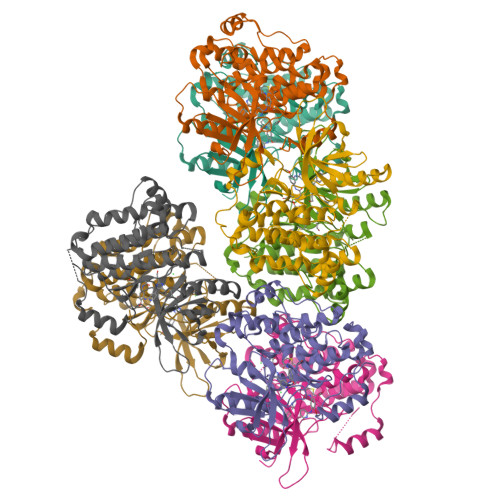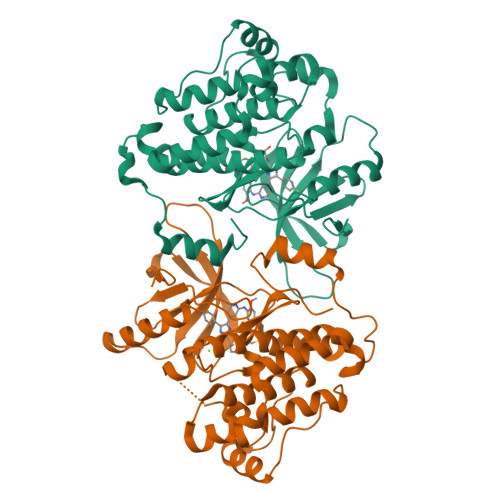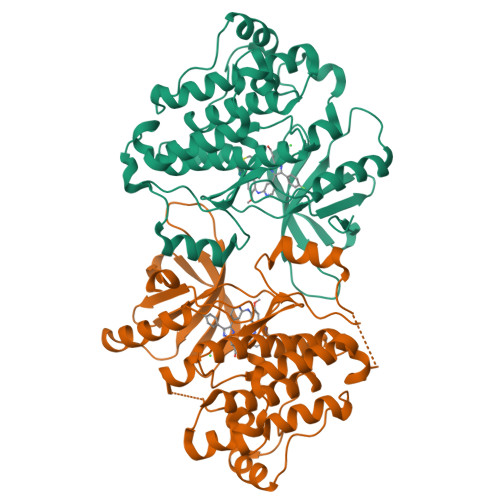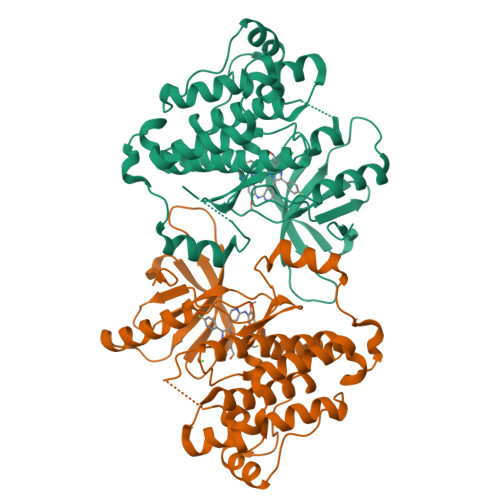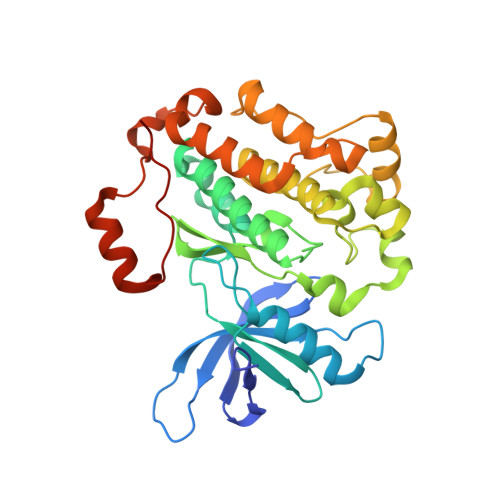Structural Basis for EGFR Mutant Inhibition by Trisubstituted Imidazole Inhibitors.
Heppner, D.E., Gunther, M., Wittlinger, F., Laufer, S.A., Eck, M.J.(2020) J Med Chem 63: 4293-4305
- PubMed: 32243152
- DOI: https://doi.org/10.1021/acs.jmedchem.0c00200
- Primary Citation of Related Structures:
6V5N, 6V5P, 6V66, 6V6K, 6V6O, 6VH4, 6VHN, 6VHP - PubMed Abstract:
Acquired drug resistance in epidermal growth factor receptor (EGFR) mutant non-small-cell lung cancer is a persistent challenge in cancer therapy. Previous studies of trisubstituted imidazole inhibitors led to the serendipitous discovery of inhibitors that target the drug resistant EGFR(L858R/T790M/C797S) mutant with nanomolar potencies in a reversible binding mechanism. To dissect the molecular basis for their activity, we determined the binding modes of several trisubstituted imidazole inhibitors in complex with the EGFR kinase domain with X-ray crystallography. These structures reveal that the imidazole core acts as an H-bond acceptor for the catalytic lysine (K745) in the "αC-helix out" inactive state. Selective N-methylation of the H-bond accepting nitrogen ablates inhibitor potency, confirming the role of the K745 H-bond in potent, noncovalent inhibition of the C797S variant. Insights from these studies offer new strategies for developing next generation inhibitors targeting EGFR in non-small-cell lung cancer.
Organizational Affiliation:
Department of Cancer Biology, Dana-Farber Cancer Institute, Boston, Massachusetts 02215, United States.







